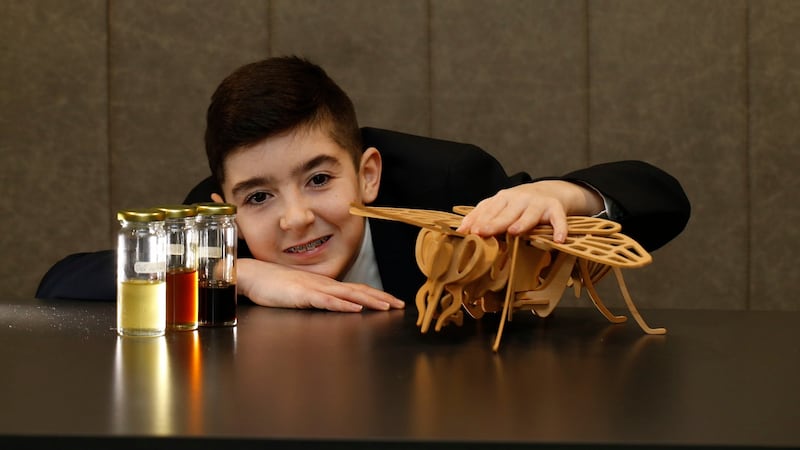Building a "bioreactor" in one's bedroom comes with inevitable downsides, but Greg Tarr believed the outcome of his endeavours could lead to a better world in the form of renewable jet fuel that is less polluting than current options.
The 15-year-old attending Bandon Grammar School in Co Cork is up-front about the downsides of working on his project; his "plug-flow reactor", which uses algae to generate oil, has ruined carpets, and his house "stank of oil and vinegar for months".
His mother was somewhat oblivious to it, he said, but his father was a close observer of operations – which applied high pressure to a combination of algae, water, sunlight and greenhouse gases – probably to ensure the roof wasn’t blown off their house.
Most significantly, his efforts – the results of which are his third entry into the Young Scientist and Technology Exhibition – have achieved a significant result, he said.
The use of bioreactors in such circumstances is not new, he stressed. However, his use of ultrasound to stir the reactor – which creates microscopic bubbles that explode, contract and shake the reactor violently – is new. Critically, it resulted in a 10-per-cent increase in oil output. That, Greg noted, “is astronomical in oil industry terms; the equivalent of billions of dollars”.
Having perfected the development of algae for such purposes in 2017, he is now convinced his work can be deployed on an industrial basis. The use of biofuel is forcing its way on the agenda because of the decline of fossil fuels in a warming world and, in his view, the electric jet is many years away.

The pursuit of a safer world prompted Ava Casey (15) of Sutton Park School in Dublin to identify and evaluate natural materials that could be used as cladding on buildings, but to also test their fire-resistant and insulating performance compared to man-made options. The research was prompted by the Grenfell Tower fire in London, and her awareness that bark in some instances was known to protect tree trunks in fire-prone areas.
The result is what she called “a new fire-proof system for tall buildings”, using bark from trees. “Natural materials can outperform many man-made materials that were made to out-perform natural materials,” she said.
Scots pine and cedar not only out-performed polyethylene, which was used in Grenfell, but was also shown to be a better insulator, with the latter proving to be the best of all options. She hoped that a prototype she has developed following her tests will be examined with a view to being used in buildings.
Ensuring honey is pure enough to best fulfil its abilities as a health food, antioxidant and counter-agent to allergies drove Rian Byrne to evaluate 18 varieties. The critical indicators of quality are levels of hydroxymethylfurfural (HMF) and moisture, he explained.
The second-year student at Coláiste Chill Mhantáin in Co Wicklow sourced honey from Ireland, Australia and New Zealand for his experiments, which he conducted with the help of Teagasc. He focussed on HMF levels in particular, which arise when sugars break down as a result of heating.
He was glad to report all brands were of good quality, and inside EU recommended limits but there were notable variations, as a consequence of which he believed it should be mandatory that HMF levels are indicated on product labels; none were indicated on the brands he tested.











